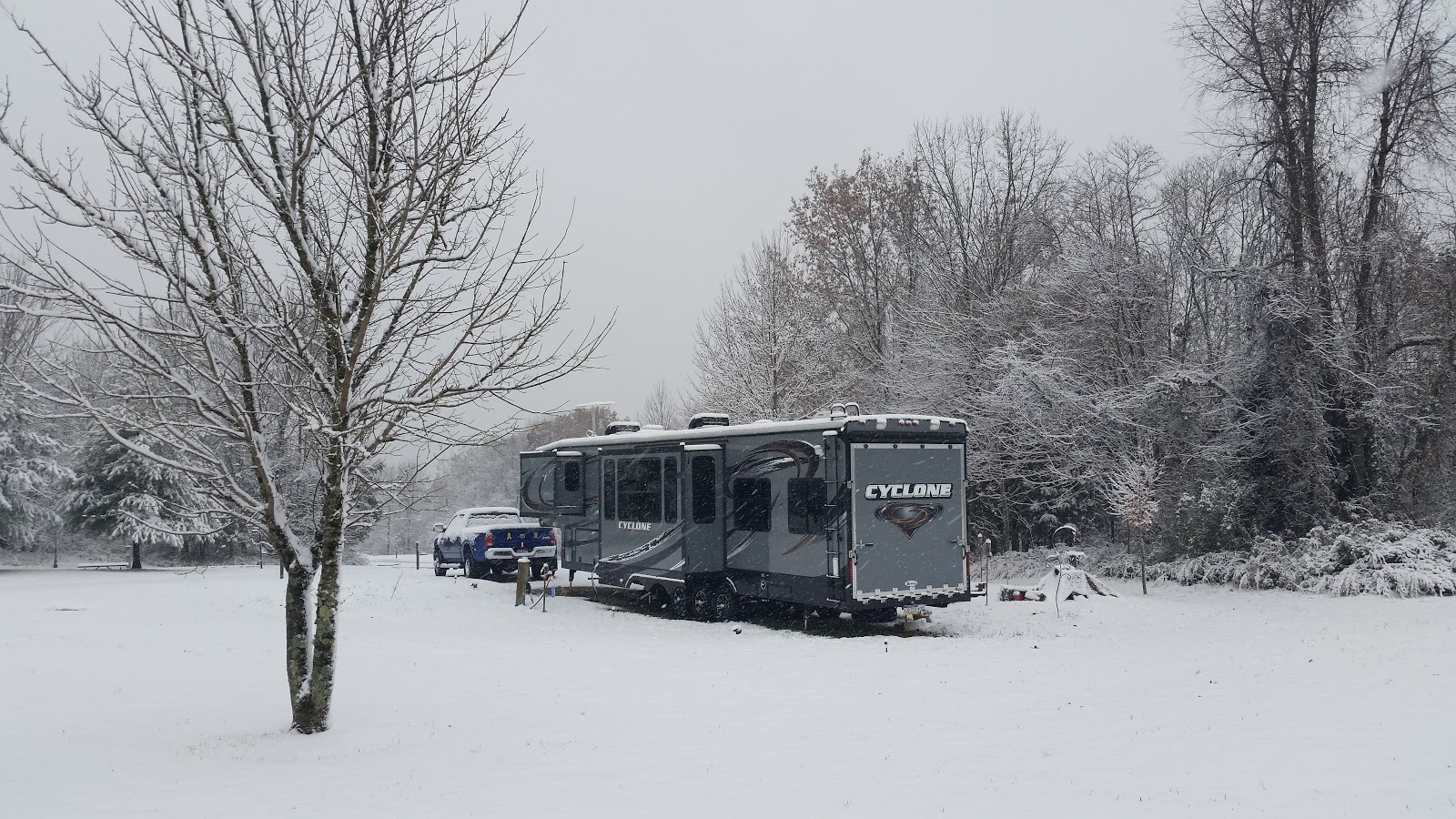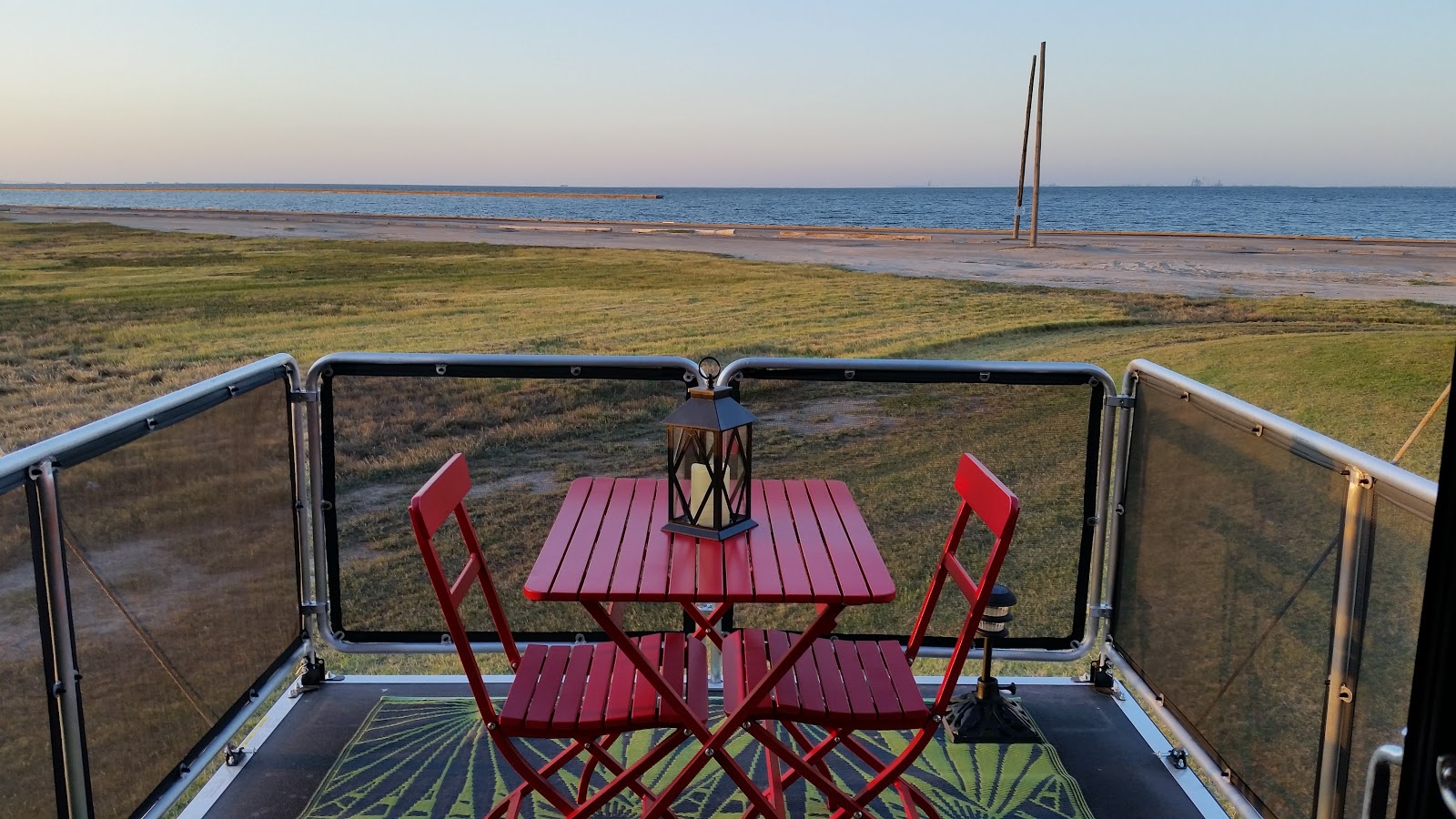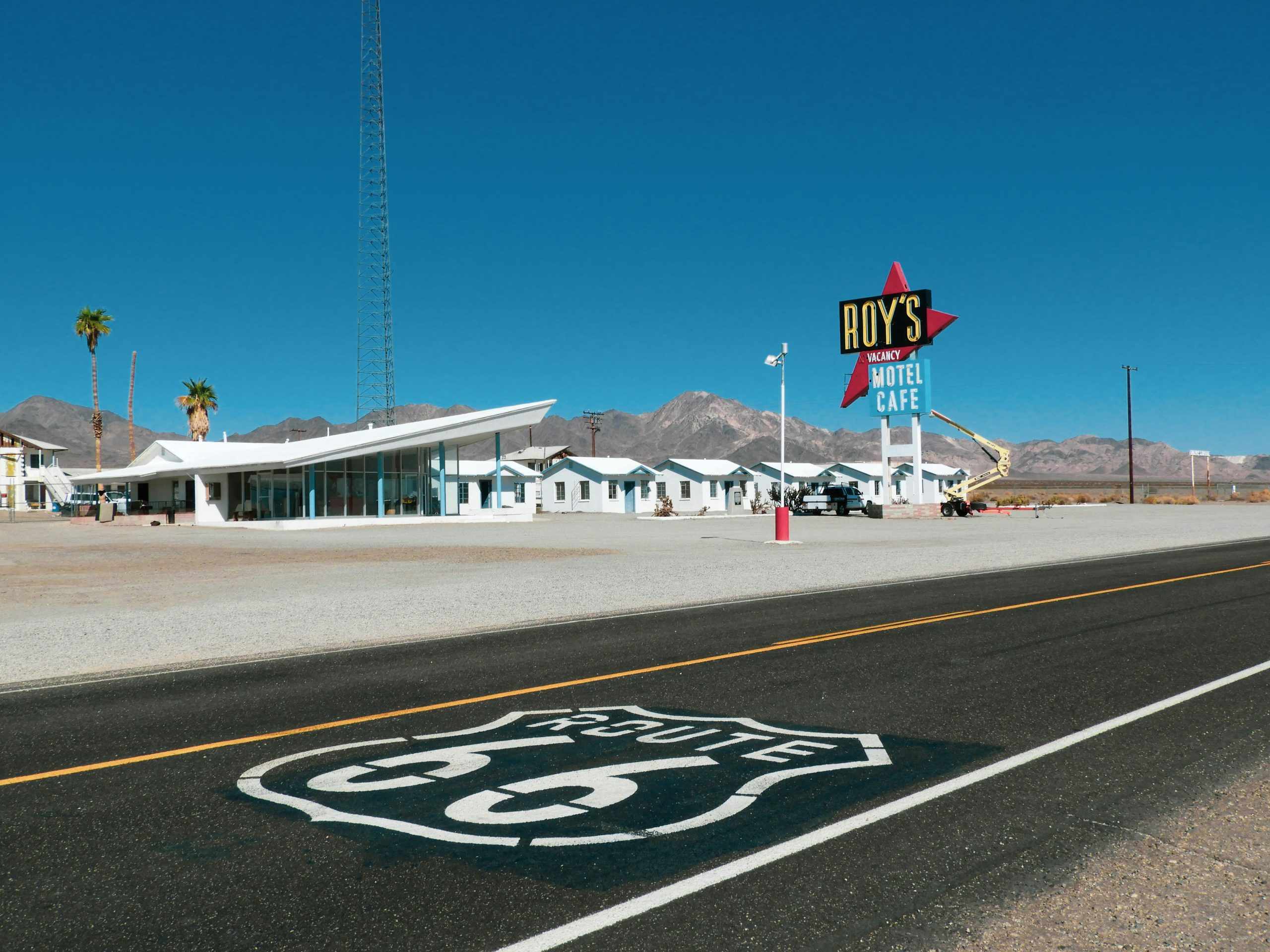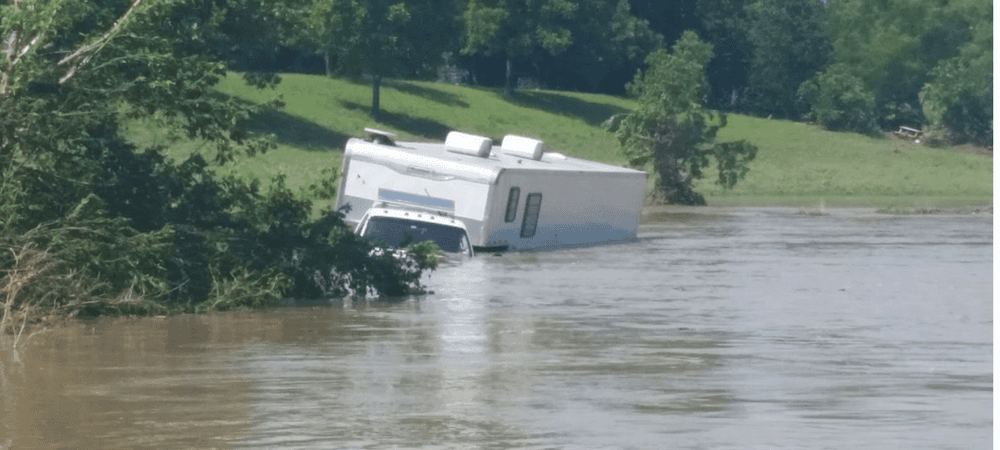Traveling in an RV can pose anxious moments in the event of a storm or inclement weather. I’d be lying if I told you that in our three and a half years of full-timing, it has been all sunshine and rainbows. You can’t control what Mother Nature is going to throw at you, but you can control how you react and how you prepare. In this article, I’ll share some of my experiences with inclement weather on the road, as well as how you can properly prepare.
Our Experiences with Bad Weather and Storms While RVing
Having traveled all over the United States with our 5th wheel, we’ve experienced almost every facet of weather known to man; hail, temperatures over 100 degrees, tornadoes, hurricanes, lightning, windstorms, flooding, freak snowstorms, and freezing. We’ve made plenty of mistakes during that time. Some of the mistakes cost us money and others cost us numerous bottles of my Stress Away essential oil, but we survived and learned from them.

During our second year of RVing we scored a beautiful waterfront site in Corpus Christi, Texas. We also happened to visit during hurricane season and experienced our first hurricane (or remnants of) as RVers. During the first three days, we enjoyed a glorious million-dollar-view off of our 5th wheel toy hauler’s rear patio deck.

Two days later, there were waves crashing near the rear of our RV. The pier disappeared, picnic tables were swept out to sea and flooding ensued.

The local weather news station reported the hurricane was headed out to sea and would not be making landfall.
However, early that morning I woke to silence. Our power was out. I fumbled with my flashlight to look out the half-fogged windows and noticed water ripples coming really close to our 5th wheel’s tires. Stress and panic immediately ensued; I woke my husband.
Because of our lack of planning, we were stuck. We didn’t stow my Harley Davidson motorcycle in the toy hauler garage. The storm was packing 70-90mph winds with driving rain and sea water. We could not even relocate the motorcycle that was parked a hundred yards away.
Several mistakes were made. We weren’t familiar with safe evacuation procedures, safety locations and all our belongings were in disarray. We weren’t prepared to evacuate. In fact, we weren’t prepared for anything.
Storm Preparation for RVers
In reading this post, I hope you learn from our mistakes. As you see, weather can change quickly leaving you and your family vulnerable. Whether you’re a seasoned RVer or you’re new to RVing, you’ll need to be proactive about yours and your family’s safety and pay attention to the weather forecasts.
If you aren’t, this is what can happen. I took this photo in Bandera, Texas after a violent overnight storm and flood in 2016. Because the family had taken this storm seriously, they evacuated when instructed and no one was hurt.

What to Do Before a Storm
If you find yourself driving your RV while a potential storm is approaching, the most important thing is to always have a plan of action.
As soon as you arrive at your campsite, you should research the closest storm shelter and create an evacuation plan.
When the weather radio or television stations post ‘Watch’ (i.e. Tornado Watch, Hurricane Watch, etc.), it’s a good idea to get your Go Bag ready, have jackets ready and put your shoes on (not flip flops!).
When the local authorities post ‘Warning’ (i.e. Tornado Warning, Hurricane Warning, etc.), local sirens will sound off. You should immediately relocate your family and pets to the closest storm shelter. At campgrounds and RV parks, they are usually at brick-built bath houses and community rooms.
4 Stages of Weather Warnings You Should Know About
Now, let’s talk about WEATHER STAGES:
- WEATHER OUTLOOK: Issued when a hazardous weather event is ‘possible’ in the next week. Outlooks are intended to raise awareness of the potential for significant weather that could threaten life or property.
- WEATHER ADVISORY: Issued when hazardous weather event will be occurring, imminent or likely. Advisories are for less serious conditions than warnings that cause significant inconvenience and if caution is not exercised, could threaten life or property.
- WEATHER WATCH: Issued when the risk of hazardous weather event has increased significantly but its occurrence, location or timing is still uncertain. A Watch means that hazardous weather is possible. You should have a plan of action in case a storm threatens. You should listen for information and possible warnings especially when planning travel or outdoor activities.
- WEATHER WARNING: Issued when a hazardous weather event is occurring, imminent or likely. A warning means weather conditions pose a threat to life or property. People in the path of the storm need to take protective action.
If You’re Caught in a Storm
If you are on the road driving, drive cautiously to the nearest exit safely and find a large sturdy building to shelter yourselves in.
Weather can change very quickly and if you’re not aware of its changes, it can catch you and your family off guard. Do not attempt to drive through high water, blizzards or flash floods.
Brief Check-List for Staying Safe Amidst a Disaster
Here’s a good step-by-step reference guide should you be faced with weather emergencies.
If you have +24 hours notice of impending detrimental weather:
- Evaluate your surroundings.
- Tune into local weather forecast stations and the National Weather Service
- Relocate immediately if you’re near a river, ocean, washes or flash flood area. Seek higher ground.
- Pack your Go Bag
- Have sturdy shoes and jackets readily available.
- Stow gear that’s outside (i.e. camp chairs, tables, grill, fire pit, etc.)
- Let your family know where you are or where you will be headed.
- Charge all electronics and battery banks.
- Refuel vehicles and generator.
- Fill water tank (at least 1/3) and empty gray/black tanks
- Withdraw cash from an ATM.
- Pack extra water in your GO VEHICLE.
- Grab snacks or lunch to go.
If you cannot relocate your RV or if you have less than 1-hour notice, here’s what you can do:
- STAY CALM
- Locate the closest storm shelter and prepare to go.
- Tune into local weather forecast stations and the National Weather Service.
- All members of your party should have sturdy shoes on. Skip the flip flops; you may return to debris fields.
- Jackets should be readily available.
- Emergency/Evacuation Go Bag (listed below) should be packed and at the door ready to go or in your vehicle.
- Portable kennels should be in your vehicle and leashes should be ready for your pets.
- Each member of your party should make a quick bathroom visit.
- If you have time, secure outdoor gear (chairs, grill, tent, etc.)
- Take your pet(s) for a potty break.

How to Create an RV Go Bag
I mentioned your Go Bag above. Your Go Bag contains contents you will need in the event of an evacuation. It’s important to include medical needs, necessary papers, food, and water. Below is a comprehensive list to help you pack your own. You can add or subtract suggestions in your Go Bag to accommodate yourself and/or your family accordingly (i.e. baby items, medical supplies, etc.).
Recommended Items for your Evacuation/Emergency ‘Go Bag’
Here’s what you should, at a minimum, include in your Go Bag:
- Identification and Drivers License(s)
- Bank and ATM cards
- Cash (paper and coins)
- Important Legal Papers
- Contacts and Phone Numbers
- Prescriptions and Eyeglasses
- Drinking water (don’t forget pets)
- Pet food and bowls
- Pet harnesses and leashes
- Carriers or kennels for pets
- Granola bars, dried fruit, snacks
- Weather radio
- Cellphones and cords (fully charged)
- USB battery banks (fully charged)
- Flashlight(s) (fresh batteries)
- Insurance policy and contact numbers
- Jackets and/or raincoats
- Emergency blanket(s)
- First Aid Kit
Regarding water, it’s essential to have at least 2 gallons (or more) of drinking water in your vehicle at all times. Also, it is imperative to have cash in your Go Bag as well. Know that in the event of power outages, you might not be able to access your money via ATMs or use your bank cards as payment for fuel, lodging, or meals. You and your family may have to seek long-term shelter away from your RV.
Travel Safely
Finally, take inclement weather watches and warnings seriously during your RV travels. Always expect the unexpected as the sky sometimes lies. Yours and your family’s safety should be forefront.
Thing’ can be replaced, people can’t. Have fun RVing but respect good ole Mother Nature when she calls and be safe out there.








